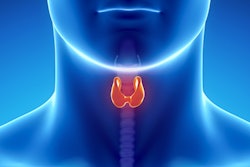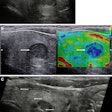More in Home
FAPI-PET shows value in staging lung cancer patients
October 17, 2024
Radiology's G7 forum goes ahead in Venice
October 16, 2024
Interobserver agreement modest on ILD diagnosed with CT imaging
October 15, 2024
Could elastography replace conventional ultrasound-guided FNAC?
October 15, 2024
How accurate is ChatGPT for differential diagnoses?
October 15, 2024
Out-of-pocket imaging costs may delay needed care
October 15, 2024
New guidelines cover theranostics for brain tumors
October 14, 2024


















